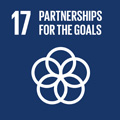- Docente: Chiara Tartarini
- Credits: 6
- SSD: L-ART/04
- Language: French
- Teaching Mode: In-person learning (entirely or partially)
- Campus: Bologna
- Corso: Second cycle degree programme (LM) in Visual Arts (cod. 9071)
-
from Nov 10, 2025 to Dec 17, 2025
Learning outcomes
Students acquire critical knowledge of different orientations and strategies of museum mediation (interpretation) in museums. They are able to understand and to evaluate peculiarities and potentialities of museum mediation (interpretation), in the prospect of implementing initiatives that envisage active participation of the public. In particular, they are able to design museum mediation (interpretation) projects that promote the understanding and enhancement of the historical-artistic heritage in order to strengthen commitment to cultural accessibility of the institutions.
Course contents
The course is organized into two parts: a theoretical part and a practical part. In the first part, we will analyze the fundamentals of museum interpretation in order to understand and enhance cultural heritage. In the second part, we will focus on the role of exhibition texts as tools for producing/mediating meaning. During the lessons, writing exercises on museum texts (exhibition panels/labels) will be proposed.
Limited places for incoming exchange students:
Places for incoming students are limited and mainly reserved for students enrolled on art programmes at their home university. To check the availability of places, please write to amac@unibo.it
Readings/Bibliography
The exam consists of a rewrite of three exposition texts (see below: Assessment methods).
In addition, students are required to choose 2 texts from the following list:
D. Dean. Museum Exhibition: Theory and Practice, Routledge, London 1996, p. 110–131.
M. Ekarv, Combating redundancy: writing texts for exhibitions in E. Hooper-Greenhill (ed.), The Educational Role of the Museum, 2nd ed., Routledge, London-New York 1999, p. 201-204
H. Gottesdiener, ed., Textes et public dans les Musées, « Publics et Musées », n. 1, 1992, p. 4-103 (choose 1 article)
D. Jacobi, D. Miège, «La médiation écrite de l’art contemporain: tensions et paradoxes», Quaderns de Filologia. Estudis Lingüístics, vol. X, 2005, p. 113-130.
D. Jacobi, Y. Jeanneret, «Du panneau à la signalétique: lecture et médiations réciproques dans les musées», Culture et Musées, Hors-série, 2013, p. 47-72.
D. Jacobi, Les étiquettes dans les musées + Ecrire sur l’art contemporaine in Id., Les musées sont-ils condamnés à séduire, MkF, Paris 2017, pp. 72-104 (ch. 3) p. 167-197 (ch. 6).
P. Mc Manus (1989) «Oh yes, they do: how museum visitors read labels and interact with exhibit texts», Curator, vol. 32, n. 3, 1989, p. 174-189.
K. Tauzin, «Le texte de médiation à la recherche de ses lecteurs modèles», Culture et Musées, n. 3, 2004, p. 117-138.
At the beginning of the course, all texts will be available on VIRTUALE.
Teaching methods
Lectures; Cooperative learning; Class exercices and presentations.
Assessment methods
The exam consists of rewriting three exhibition texts (after reading two of the articles/book chapters listed in the bibliography—see above).
You may choose texts with different functions. However, the rewrites must meet the following criteria:
- Intro panel: 130-150 words
- Panel section: 100-130 words
- Object label: 50-70 words
The choice of museum/gallery, etc. can be communicated to the professor in the second part of the course (for attending students) or, in any case, at least 20 days before the final exam.
The presentation containing the original texts and their rewrites must be sent (pdf or ppt) to the professor at least 10 days before the final exam.
N.B. During the last days of the course, attending students will have the option of presenting their project to the class. This will allow them to get suggestions for refining their final project. Students interested in presenting their project to the class must notify the professor halfway through the course. Presentations will be scheduled based on the number of participants.
On the day of the final exam, students will give a presentation on the exhibition texts they have submitted (max. 20 minutes) and will be expected to explain their lexical and structural choices in detail.
Evaluation criteria:
1. In-depth knowledge of the context, originality of analysis and reflection, mastery of expression, and use of language appropriate to the target audience will be evaluated with marks of excellence.
2. Basic knowledge of the context, modest analytical skills, correct language but not always well suited to the target audience will result in moderately satisfactory evaluations.
3. Limited knowledge of the context, rewriting based on minimal adjustments, language not always well calibrated or appropriate for the target audience will lead to barely satisfactory evaluations.
4. Poor understanding of the context, failure to define a target audience and use of inappropriate language can only be evaluated negatively.
Students with specific learning disorders (SLD) or temporary/permanent disabilities should contact the appropriate University office (https://site.unibo.it/studenti-con-disabilita-e-dsa/en ) in advance. The office will be responsible for proposing adaptations to interested students. Such adaptations must be submitted to the teacher for approval at least 15 days before the exam session. The teacher will also evaluate the adaptations regarding the training objectives of teaching.
Teaching tools
PPT; video; teaching resources available on VIRTUALE.
Office hours
See the website of Chiara Tartarini
SDGs




This teaching activity contributes to the achievement of the Sustainable Development Goals of the UN 2030 Agenda.
